#and got all but replaced by the Gay Liberation Front post Stonewall
Text
God, reading about and listening to podcasts about queer history it's disappointing to see that people have been infighting about the same shit for years
#Harry Hay and the others had the right idea when they formed the Mattachine Society#but of course the conservative assimilation gays got into and drove him out#beacause Hay was trying to spread the word about queer history and the very real culture that was there#and the conservatives were saying 'oh no we're just like straight people! we have to dress and act straight!'#'also we can't have any communist links cus the lavender scare! even though the communist party doesn’t like gays either!'#anyways Harry eventually embraced his femme side and founded the radical faeries#(Michael and Emmet attend a gathering in queer as folk and it's cool af)#but yeah Mattachine was cool but it died for a reason#and got all but replaced by the Gay Liberation Front post Stonewall#the podcast is Queer Serial btw#there was a really fascinating episode with a radio interview of three self described transexual women and a cop#who was actually trying to help and promote their cause#(very rare)#but my god it's sad how relevant it still is today#queer history#lgbtqia+ history#queer
8 notes
·
View notes
Text
Chapter Twenty-Two : LA CAGE AUX FOLLES DOGMA

Dogma : the official system of principles or doctrines of a religion or the positions of a philosopher or philosophical school.
In 1973 at the Théâtre du Palais-Royal, took place the first official performance of La Cage Aux Folles written by Jean Poiret, a vaudeville centering on confusion that ensues when the son of a night club owner and his main star (also a man) brings his female fiancée’s ultraconservative parents for dinner. An incredible success on stage, it went on the run for close to 2,000 performances.
Five years later, La Cage Aux Folles was adapted into a movie directed by Edouard Molinaro. You want to talk about phenomenon ? It became the second-highest grossing movie in France that year, with 5,406,614 admissions and is till the 10th highest grossing french movie in the U.S.
It was later adapted into a Broadway musical in 1983 with Harvey Fierstein at the helm (see article from June 2nd), and a remake was shot in 1996 directed by the great late Mike Nichols called The Birdcage.
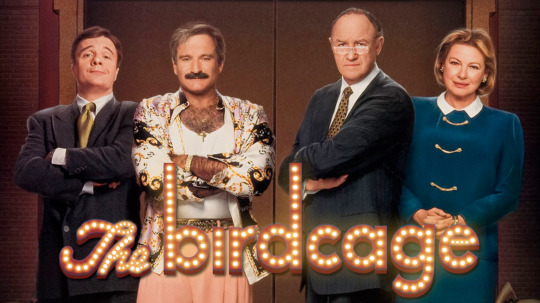
I have to tell you that right now, I hate La Cage Aux Folles. It has little to no qualities in terms of production value and cinematic interest and most of all, it’s probably one of the most offensive movies in the History of cinema for LGBTQ+ people. But it was also a product of its time, enslaved by moral codes and infused by a lack of comprehension that is ours today.
That’s what I want to talk about here. Representation.
It ain’t pretty. Like Michel-Serrault-in-drag-not pretty.
HISTORICALLY VILE
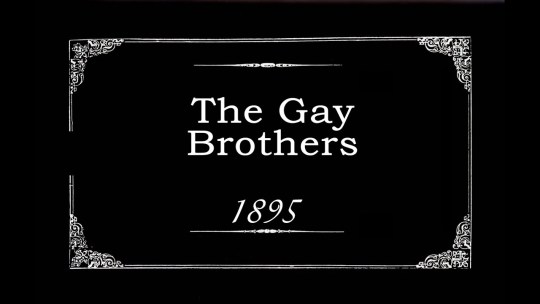
The first representation of homosexuality in cinema was in 1895’s short silent film The Gay Brothers. We can’t really know for sure because
1. homosexuality was not common knowledge back then
2. Gay didn’t mean Fag in the late 19th century
3. two men dance together while a third plays the fiddle. Conclude for yourself.
Anyway, the movie intends to be comical and makes a lot of jokes at the expense of its protagonists. Trend-starter, that one.
As movie making was booming, increase awareness and presence of Queer people appeared in that media. Unfortunately, the rise of the Production Code (created in 1922) brought a lot of censorship to the community in its possibility of portrayal.
Homosexuality was never explicitly mentioned and only in two ways : as a comical device or a villainous character who’s sickness, perversion and crimes are obvious to the audience.
When it came to homosexuals, worldwide viewers had three options to explore : laughter, pity or fear.
Early on, the girlish traits of the gay character and the stupidity of its desires were put front and center, whether in westerns (The Soilers) or in Charlie Chaplin movies (Behind the Screen). In historical movie term, the character would be referenced as the SISSY. Answering to the same principles as the whore, the dad or the saint figures, the SISSY had for purpose to give more masculine value to the hero (and to the viewer). But as the butt of the joke and in the constraints of the Production Code, he didn’t have a proper sexuality to act. An innocent childish fool.
This convention continued with the talkies in the 20s and 30s as a subject that was partially shown but never discussed.
The few non-judgmental attempts at depicting Queerness were met with furious reactions and indescribable indignation from religious audiences, like when Marlene Dietrich kissed a woman on the lips in Morocco (1930), causing reinforcement of the Code.

For over two decades, scripts would pass through intense censorship and oppression, erasing homosexual overtones in novel adaptions or changing too direct gay references and replacing them with anti-semantic plot lines, more line with the time.
To override the code, directors had to be extremely smart. Alfred Hitchcock, a master of all movie crafts, was the best at this game. In 1948’s Rope, two roommates kill another man to finally know what it feels like, then host a dinner party in their apartment while the body is still there. The movie is fascinating in its “one-shot” concept and the script never mentions the possibility of a sexual relationship between the two but if attentive, you realize that they live in a one-bedroom apartment. Since you’ve spent the entirety of the movie in the living room, you know no one sleeps here. So. They gay. They’re also despicable murderers. Yep. FEAR factor.
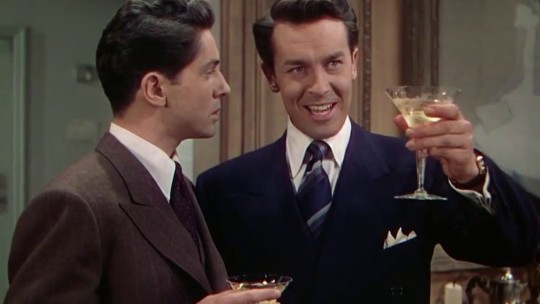
I have so many more examples of this but let’s fast forward to the late 50s and the end of the Production Code’s dominance on Hollywood. 1959’s Some Like it Hot depicts two male protagonists pretending to be women who join a musical touring band. Straight people dressed in woman’s clothes. Come on, moviegoers, time to LAUGH. That movie gets a pass because Billy Wilder is a genius.
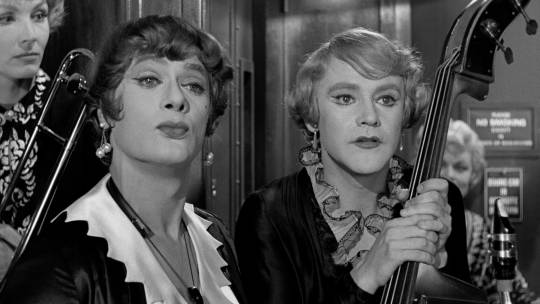
Then you have Spartacus (1960) and that homo-erotic relationship between the protagonist and its servant. Still underlined as hell but still.
Then not much else. Until…
WE GOT FUCKED (AND NOT IN A GOOD WAY)

In the States, The Boys in the Band (1970) shook things for good (and, in a lesser way, The Producers, 1968). A year after the Stonewall Riots, while homosexuality was still considered a mental illness, This play adaptation’s portraying of nine homosexuals (eight, if you’re really delusional) was revolutionary. But some of their characterizations (I’m looking at you, Emory) and the way they tear each other apart as sure-to-be closeted monsters are quite hard to watch. In a way, they are still crazy sissies. Audience, PITY those homosexual fools.
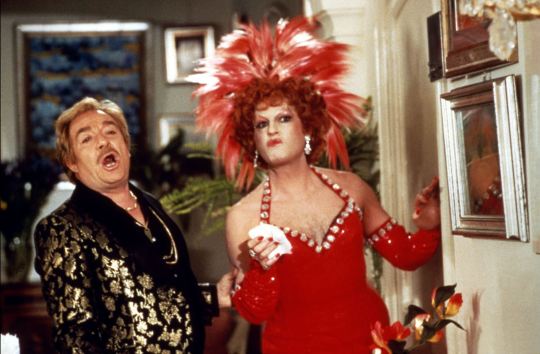
And then, La Cage aux Folles. Although France made some attempts at talking about homosexuality without obeying to the social et moral duties of the era with La Nouvelle Vague (Amitiés Particulières, 1964), it was Molinaro’s popular success that sealed audiences’ views on gay people in this brand new era.
By depicting Zaza (Michel Serrault) in such a flamboyant way, combining homosexuality, drag queens, transvestites and transgender people into one, this movie, with its truly international success, wrote unintentionally a new rulebook about what a homosexual is deemed acceptable on screen. Such rule would be followed for decades to come. Do you now understand the dogma definition at the beginning of the article? I’m a smart cookie, you know.
LA CAGE AUX FOLLES DOGMA
For a gay character to be portrayed in a major motion picture and thus be accepted by audiences, he has to :
1. Be recognizable from the straight characters, as not to confuse the audience.
2. Be funny and over the top, so that the audience don’t take offense to its immorality.
3. Reassure male audiences on their true masculinity with ridiculous ways to act, walk, talk and live.
4. If your movie embraces the gay character’s view at some point, be sure to let him make all the compromises in the world so that the audience knows that HE knows that what he is doing is ‘peculiar’ and ‘wrong’
5. Make fun OF him as much as possible. And pretend you’re having fun WITH him.
PS. Don’t forget, glitter and fun mockery.
Zaza screams his lungs out for nothing and everything. Sorry, “her” lungs out, since SHE only uses the female pronoun to talk about HERself. She performs in a gay cabaret, is clearly depicted as the female counterpart of the relationship (because you need to apply binary concepts no matter what), decides to dress as a woman to meet the conservative in-laws for the first time. Zaza is the new post-gay liberation movement acceptable SISSY.
Zaza is also a plague for the movement.
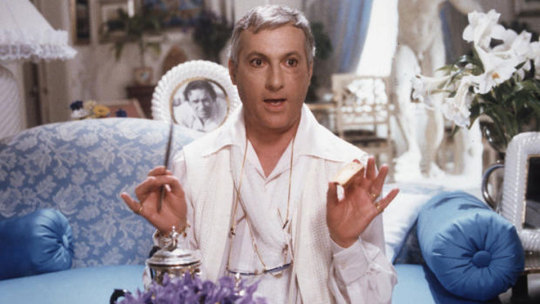
Michel Serrault, as talented of an actor as he was, doomed us for years to come by transposing a fantastic stage character into a movie ready to be assimilated by millions.
Media is power. If they say something has to be this or that, the audience will follow, especially in a time when gay people weren’t equals in rights or ready to mingle with the general population.
Critics embraced it. It was nominated for three Oscars. Serrault won Best Actor at the Césars. The Golden Globes deemed it the Best Foreign Film of that year. Talk about Media approval.
We were fucked.
THE MINORITY AFTERTHOUGHT
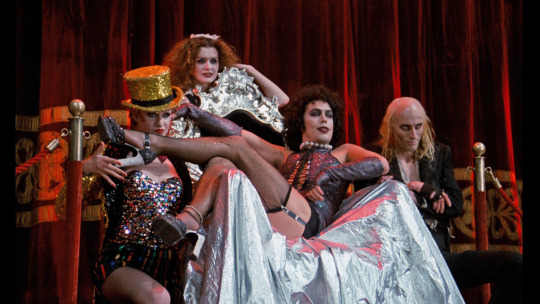
The greatest decade in cinema (in my opinion) saw the portrayal of a couple of… interesting gay characters. The Last Picture Show (1971), Cabaret (1972) and its flamboyant Maître des Lieux.
Dog Day Afternoon (1975) shocked audiences with a protagonist in a relationship with another man. Unfortunately, that other man is a SISSY who wants to have Reassignment Surgery in no way portrayed in a positive light.
The Rocky Horror Picture Show (1975) gave a shitload of screen time to Queer characters, but (SPOILER ALERT) he is an alien from another planet, a freak and the movie became a cult classic with time, it was not a studio film.
In television, gay people are nowhere to be found. Homosexuality is barely getting talked about in the news.
The Mary Tyler Moore Show has Mary go on a date with a man who turns out to be gay. It’s funny. So wacky.
Not much else.
I found a couple of shows from the 80s with LGBT plot lines .(Thirtysomething! Thirtysomething!) but the article was already way too long. Make your own damn research !
NOT THAT KIND OF SISSY

To my recollection, the first time a homosexual person was portrayed in a truly positive light was in Jonathan Demme’s Philadelphia. The struggle of a HIV-positive man seeking justice after he was fired. Tom Hanks won his first Oscar. Bruce Springsteen also won for his incredible song “Streets of Philadelphia”. I mean, it was still about pity lots of ways but the humanity in which the character is shown is outstanding. As Hanks puts it “Love is spelled with the same four letters”.

The 90s saw a biggest variety of Queer characters portrayed in american cinema. The Crying Game. Philadelphia. Jeffrey. Showgirls. My Best Friend’s Wedding. To Wong Foo, Thanks for Everything! Julie Newmar. Most of them offensive in terms of clichés (because… written by cis straight folks ? YEP). but a welcome demonstration of our colors.
Australian classic The Adventures of Priscilla, Queen of the Desert (1994) stays a example on how to do proper representation without removing the potential ridiculousness of Queer existence.
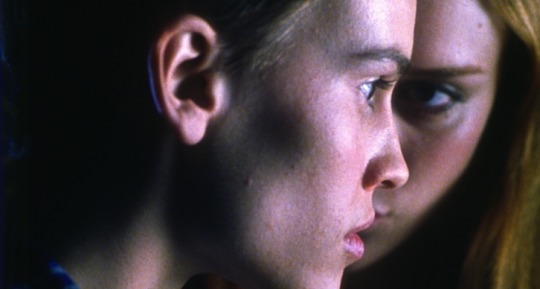
At the dawn of the new millennium, independent cinema offered us Boys Don’t Cry (1999), the true story of Brandon Teena, a trans man who tried to live his authentic life and got killed for it. More than putting Hilary Swank on the map (and an Oscar is her hands), it was unique in the sense that the queer protagonist wasn’t a joke, wasn’t scary and did not inspire pity. He was a strong man, a tuff spirit and a model for trans generations to follow.
UNAPOLOGETICALLY QUEER

Boys Don’t Cry was followed by a series of incredible movies and characters not afraid to be as Queer, as proud and as strong as Brandon Teena.
Before Night Falls (2000), Hedwig and the Angry Inch (2001), The Hours(2002), Mysterious Skin (2004), Breakfast on Pluto (2005), Kiss Kiss Bang Bang (2005), Transamerica (2005), Brokeback Mountain (2005), Kaboom(2010), Blue is the Warmest Color (2013), Dallas Buyers Club (2013), Pride (2014), The Imitation Game (2014), The Way He Looks (2014), Carol (2014), Tangerine (2015), Moonlight (2016), Call Me By Your Name(2017), A Fantastic Woman (2017), Disobedience (2017), Battle of the Sexes (2017), The Miseducation of Cameron Post (2018), Love, Simon(2018), Rocketman (2019).
Even when the gay character is used as a tool for jokes, modern cinema proved that it can be done without making fun of the gay life style, as in Scott Pilgrim vs The World (2010).

They are still mistakes along the way.
Bohemian Rhapsody. Oh fucking Bohemian Rhapsody. That movie is an abomination. First (and most importantly here), its depiction of Mercury’s sexuality is of poor-taste, even less when it comes to talk about his HIV/AIDS diagnosis. Then, it was directed by a serial rapist. Finally, it’s just a awful movie which uses nostalgia as a way to convince you that you are watching something great. And IT WON 4 ACADEMY AWARDS !
FUCK. MY. LIFE.
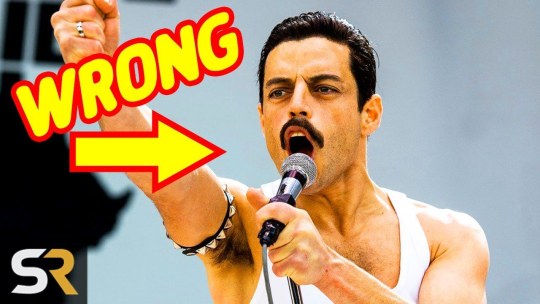
(To all my homies who know me, off course I was going to talk about Bohemian Rhapsody at some point. I’ll take that motherfucking cinematic slap in the face to the grave).
DAWN OF A NEW GAY ?
The question is simple : has visual media abandoned the dogma of La Cage Aux Folles ?
Harder answer. Yes and No.
NO, because if movies like Isn’t It Romantic (2019) in which a gay character is (even purposely) can be the protagonist’s cliché best friend still exist, it means that movies are still no over that phase of its education.
Also, if someone you barely know still ask you basic offensive questions about your sexuality, it means that we’re definitely still basically fucked. Remember, media is power.
And YES, in a way, this abominable dogma is long gone thanks to TV.
I know, right ? Cinema’s little bastard brother which didn’t want to talk about homosexuality in the 70s AND 80s ?
One of the first shows to depict homosexuality on a regular basis was HBO’s Oz. Thank you, cable. In between stabbings, sex violence and vicious murders, there was a serious exploration of the male sexuality.
Then came the 1998–1999 broadcast television season and its one-two punch. It followed Ellen’s Puppy episode (which we covered in the June 8th article).

On September 21st, 1998, Will & Grace premiered its first episode. And yes, today, we view it as a very narrow view on homosexuality. But think about it in the context of 1998. It’s a show with two of its leads unapologetically openly gay males (and a ageless woman ready to go either way). Each episode of the show was about homosexuality, and some jewish themes thanks to Grace, television’s number one fag hag. And shit, this show was funny until season 6. Like, real funny. Even the lost-in-time reboot has some redeeming qualities.
Finally, on February 17, 1999, the character of Jack introduced at the beginning of the second season of Dawson’s Creek, came out as gay. Don’t underestimate the power of teens. If they’re in on it, we all are. They were woke before “woke” was a thing.
That was just the beginning.

Queer as Folk (UK and US) and The L Word became pioneers of the LGBT TV revolution.
The Office’s Oscar Martinez came out in the season three premiere (2006), to limited clichés on its part.
Ugly Betty (2006–2010) was the gayest show of the 2010s.
By 2009, Glee ignored the window other shows created and busted the door wild open with at least 8 regular Queer characters. That same year, Modern Family introduced us to a very stable gay couple.
2011 saw the rise and consecration (in my mind) of Max Blum on Happy Endings, the ultimate cliché-avoider of the Queer community — so not a cliché that I identify more with his flaws as a man than as a gay man.
2012’s The New Normal failed at gaining the attention it deserved. Partners (2012) failed as well, but it kind of deserved it.
Brooklyn Nine Nine did something no one else did before : talk about bisexuality without making a big deal about it.
Buffy The Vampire Slayer, Once and Again, Six Feet Under, The Wire, Angels in America, Desperate Housewives, Battlestar Galactica, Grey’s Anatomy, Brothers & Sisters, Skins, Greek, True Blood, The Good Wife, United States of Tara, Shameless, American Horror Story, Please Like Me, Game of Thrones, Girls, Smash, Broad City, Orange is the New Black, Grace and Frankie, The Fosters, Superstore, Unbreakable Kimmy Schmidt, Orphan Black, Crazy Ex-Girlfriend, Transparent, Looking, The Real O’Neals, Friends From College, Sense8, One Day at a Time, This is Us, The OA, Champions, Dear White People, The Handmaid’s Tale, Pose, The Good Fight, Killing Eve, American Crime Story, The Haunting of Hill House, Now Apocalypse, Gentleman Jack, Years and Years.

They all, in small or big ways, contributed to what the situation is today.
Something closer to reality, debunked of clichés.
It’s a golden age to be Queer on TV.
I’ll say it a third and final time. MEDIA IS POWER.
A couple of years ago, I screened my end-of-study movie called Faggot (and Other Semantics) to my schoolmates and a few faculty members. The movie was about a gay dude trying to figure out who he was as a gay man (not a coming out but a coming in story) — it was very well received. At the end of the day, the tech guy who put the movie on signaled me to come and see him.
I did. He shook my hand and said ‘I didn’t know I could identify with a gay man but I did”. We’re talking about a straight single kinda annoying thirty year-old man. I wanted to slap him in the face. I kept thinking about what he told me thought.
I get it now. A window opened (even for a second) in his mind because a piece of Art took the time to represent someone “different” while using universal tropes. And without making fun of the situation.
It was an unwanted validation that I now fully accept.
That’s why La Cage Aux Folles is wrong and its dogma can fuck off.
Queer people have a voice now in the industry and are able to represent.
Queer people, REPRESENT.

0 notes